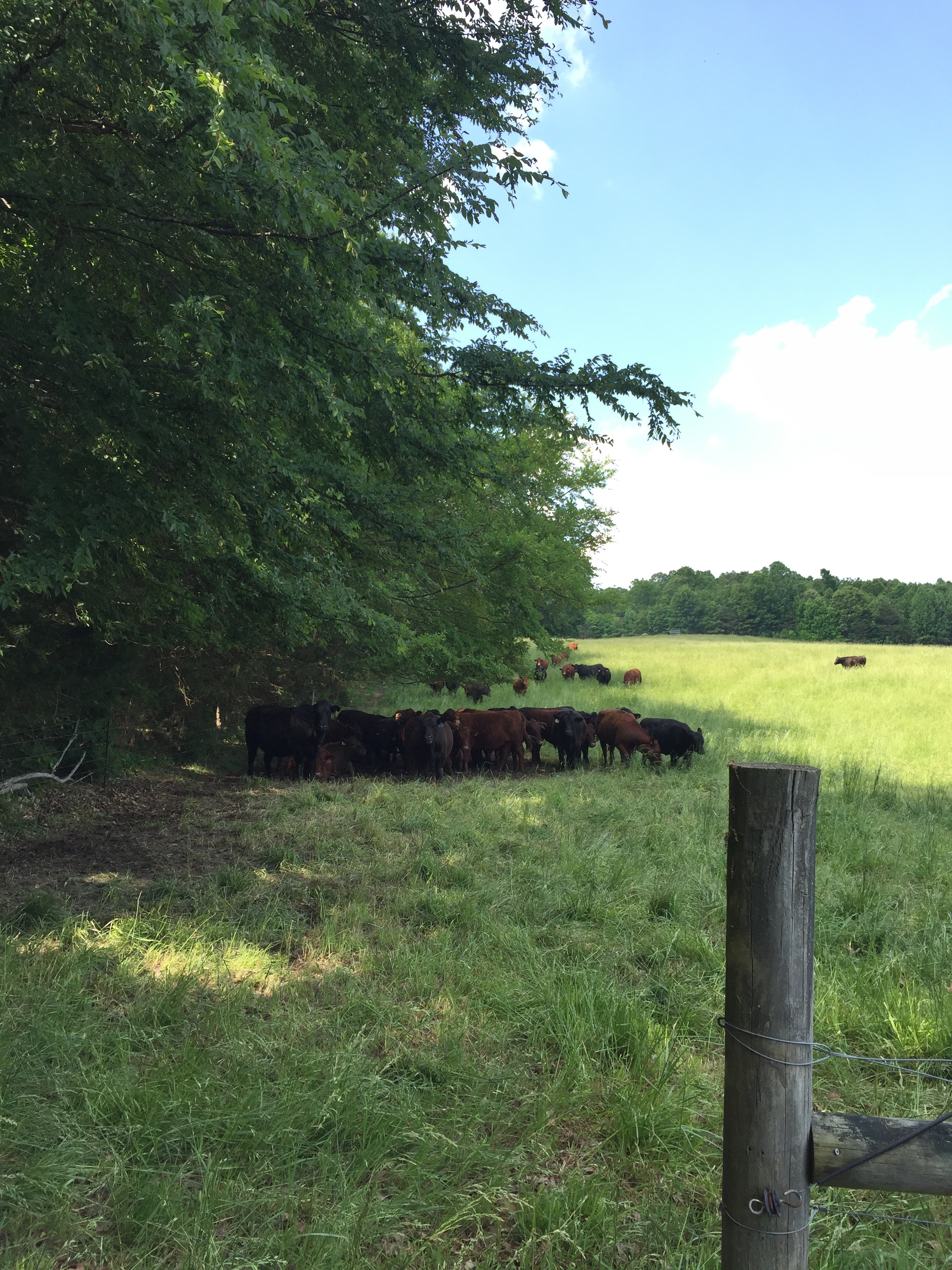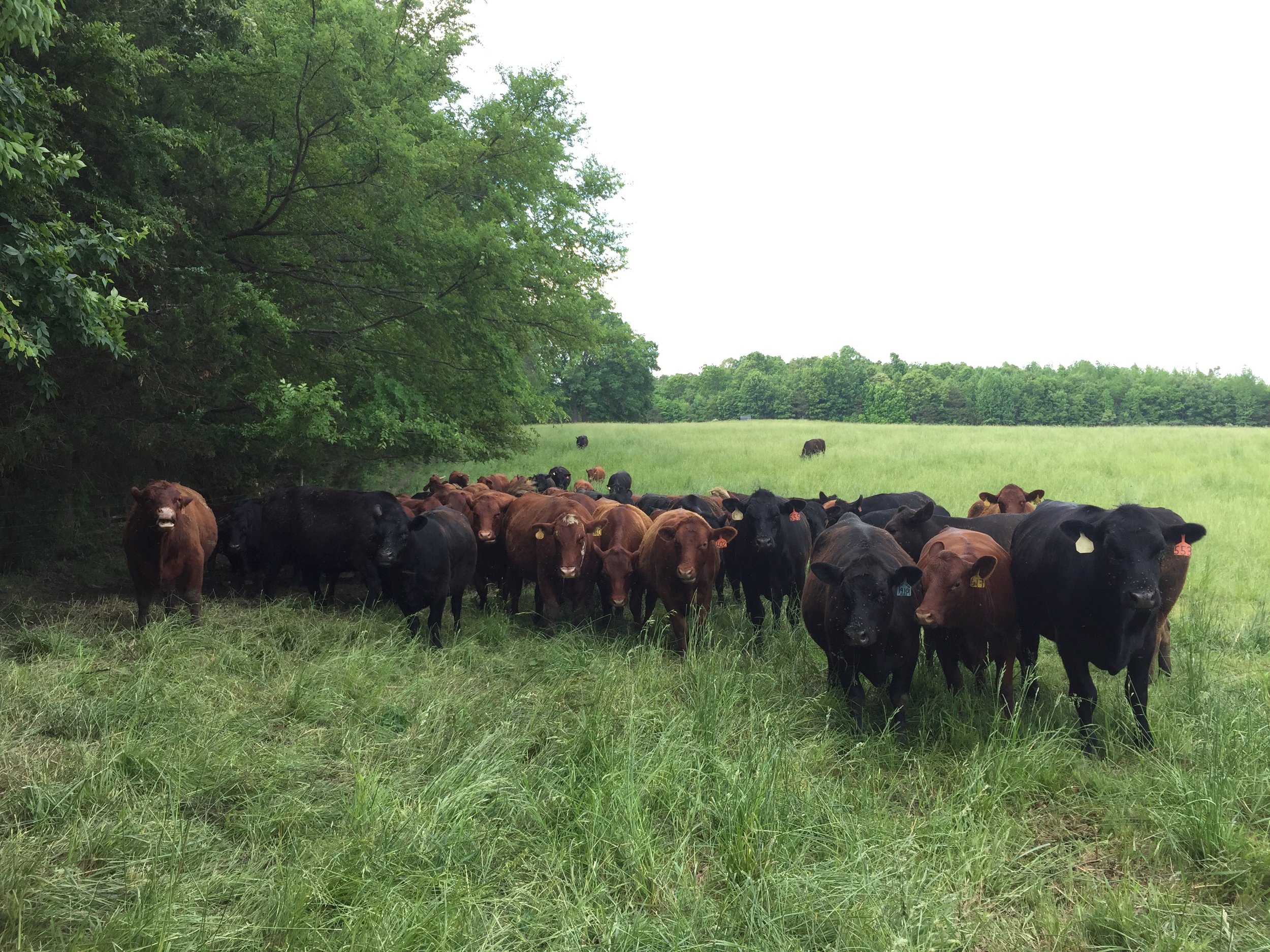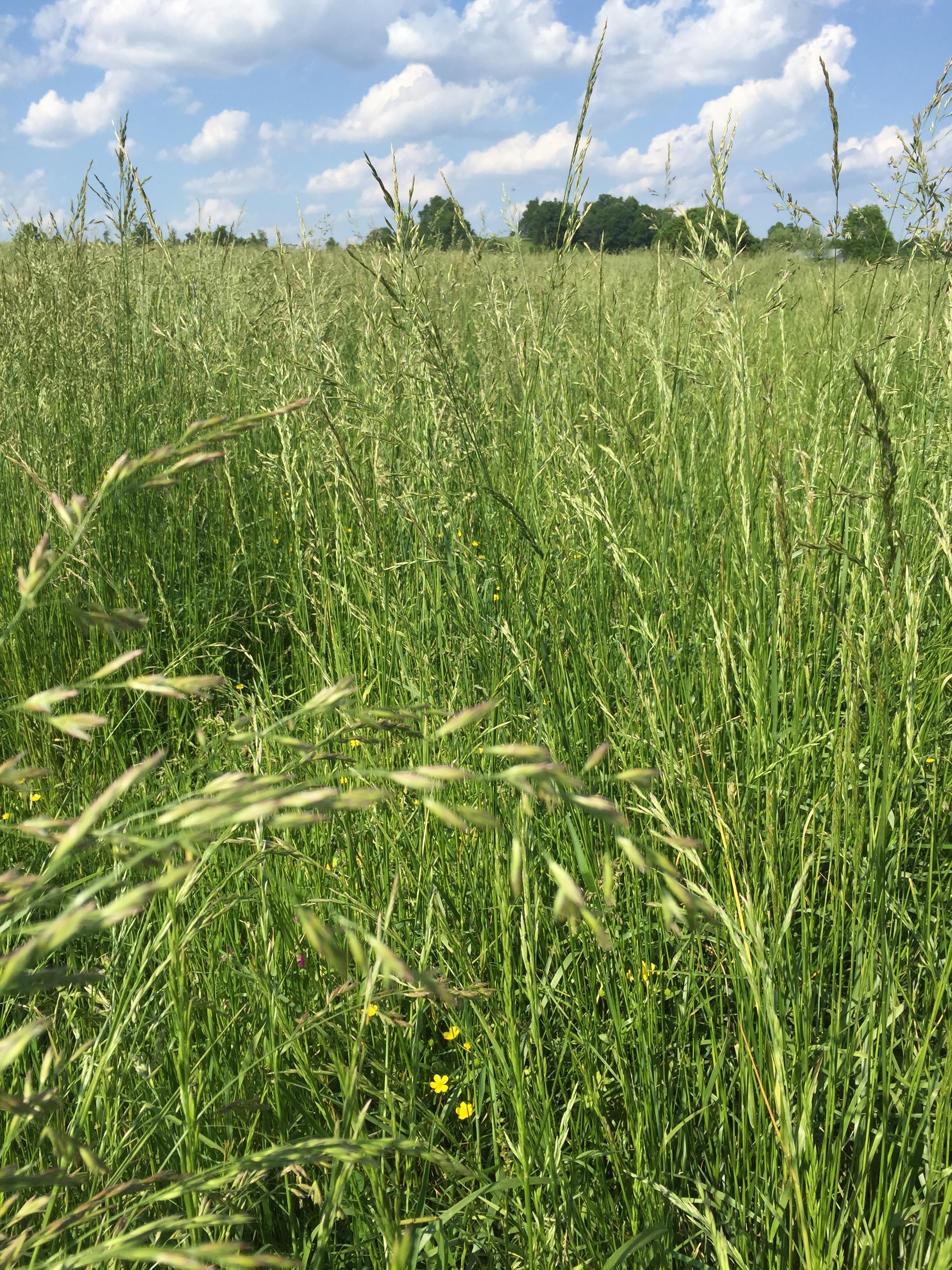Cattle help to build soil health and sequester carbon at Braeburn Farms
Braeburn Farms is where everything started for Ross Flynn. He was on his way through this part of North Carolina, heading to take on a new opportunity further south, when the financial crisis of 2008 hit. He was working on Charles Sydnor’s Braeburn Farm at the time and decided to just stay put for the time being. He’s been in Saxahapaw ever since and now partners with Charles as his butcher shop’s only beef supplier. Eliza MacLean was farming with Charles at the time and that’s what connected Ross and Eliza. Now, the three of them form a unique triumvirate of sustainable meat production that can serve as a model for others.
At Braeburn Farms, Charles uses an intense rotational grazing pattern in which he has broken his farm into multiple small pastures and he moves his herd of cattle every day, ensuring that the grasses upon which they feed are eaten down just enough to encourage regrowth and root development. The cattle are part of the overall system, but not his main focus. In a sense, they are tools for his main goal: to sequester carbon. In the Braeburn Farm system, manure is a rich fertilizer, helping to feed the pasture. Charles sees his cattle as something of an ancillary part of his farm, where his top priority is regenerating healthy soil and sequestering carbon.
BRAEBURN FARMS
SNOW CAMP, NORTH CAROLINA



